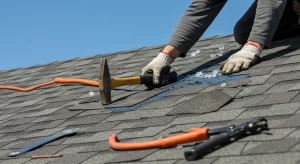The Long-Term Effects of Ignoring Hail Damage Repair
Hailstorms can be unpredictable and, at times, cause significant damage to vehicles, homes, and other structures. While the initial impact of hail might seem minor, failing to repair the damage can lead to long-term consequences that affect both the structural integrity and value of your property. Ignoring hail damage may save money in the short term, but the risks far outweigh the benefits. Over time, untreated damage can lead to costly repairs, safety hazards, and a decrease in property value.
Structural Damage Worsens Over Time
Hail damage is not always immediately visible. Small dents, cracks, or punctures in roofing materials, car exteriors, or siding might seem minor at first, but they can worsen with time. When these small imperfections go unrepaired, they create openings for moisture and other environmental elements to penetrate, leading to more severe structural deterioration. In vehicles, dents and chipped paint can eventually lead to rust, weakening the metal and making the car more susceptible to future damage. For homes, hail damage to roofing can lead to leaks, mold growth, and even compromised insulation, which affects energy efficiency.
Increased Repair Costs
One of the biggest misconceptions about hail damage is that minor dents or cracks will not lead to major expenses. However, what might start as a minor repair can turn into a costly project if left unattended. For example, a small crack in a vehicle’s paint caused by hail can allow water to seep in, leading to rust formation. Over time, this rust spreads and weakens the affected area, requiring more extensive repairs. Similarly, a tiny crack in a home’s roof can widen with exposure to wind and rain, eventually leading to costly water damage repairs. The longer hail damage remains unaddressed, the more expensive it becomes to fix.
Insurance Complications
 Insurance policies often cover hail damage, but there is typically a limited time frame for filing a claim. Ignoring the damage for too long could result in denied coverage, leaving the entire cost of repairs to the property owner. Additionally, if damage is discovered later and an insurance claim is filed, the provider may argue that negligence contributed to the worsening condition and reduce the payout. Keeping up with timely repairs ensures that insurance claims are processed smoothly and that coverage is maximized.
Insurance policies often cover hail damage, but there is typically a limited time frame for filing a claim. Ignoring the damage for too long could result in denied coverage, leaving the entire cost of repairs to the property owner. Additionally, if damage is discovered later and an insurance claim is filed, the provider may argue that negligence contributed to the worsening condition and reduce the payout. Keeping up with timely repairs ensures that insurance claims are processed smoothly and that coverage is maximized.
Decreased Property Value
For homeowners and vehicle owners alike, the value of their property is an important consideration. Hail damage can significantly reduce the resale value of a home or car if left untreated. Prospective buyers or appraisers will notice visible dents, cracks, or signs of rust and deterioration. A home with unrepaired roof damage may not pass inspections, leading to lower offers from buyers. Similarly, a vehicle with visible hail damage will be less desirable on the market, reducing its resale value. Investing in timely repairs helps maintain property value and prevents potential buyers from using damage as a bargaining tool.
Safety Risks
Beyond financial concerns, untreated hail damage can pose safety risks. In homes, a damaged roof can lead to leaks, which may cause mold growth and weaken structural components. If left unchecked, mold can create health problems, particularly for those with allergies or respiratory conditions. In vehicles, hail damage that affects windshields or body panels can compromise structural integrity. Cracks in auto glass can spread and weaken the windshield, making it more likely to shatter during an accident. Dented or rusted areas on a car’s body can also reduce its ability to absorb impact in a collision, increasing the risk of injury to occupants.
Weather-Related Vulnerabilities
When hail damage is ignored, it can leave a home or vehicle vulnerable to future weather conditions. A damaged roof may not hold up against heavy rain, strong winds, or snowfall, leading to leaks or structural collapses. Similarly, vehicles with existing hail damage may be more susceptible to additional damage from subsequent storms. Addressing hail damage as soon as possible ensures that structures remain strong and can withstand future weather events without further deterioration.
The Importance of Professional Repairs
Many homeowners and car owners attempt to fix hail damage themselves, but professional repairs are often necessary to ensure the best results. Experts can assess the extent of the damage, provide high-quality repairs, and prevent long-term issues from arising. For vehicles, paintless dent repair is a common method used to restore surfaces without the need for repainting. For homes, roofing professionals can replace damaged shingles or repair leaks before they lead to more severe structural problems. Seeking professional help ensures that repairs are done correctly and that the risk of future damage is minimized.
